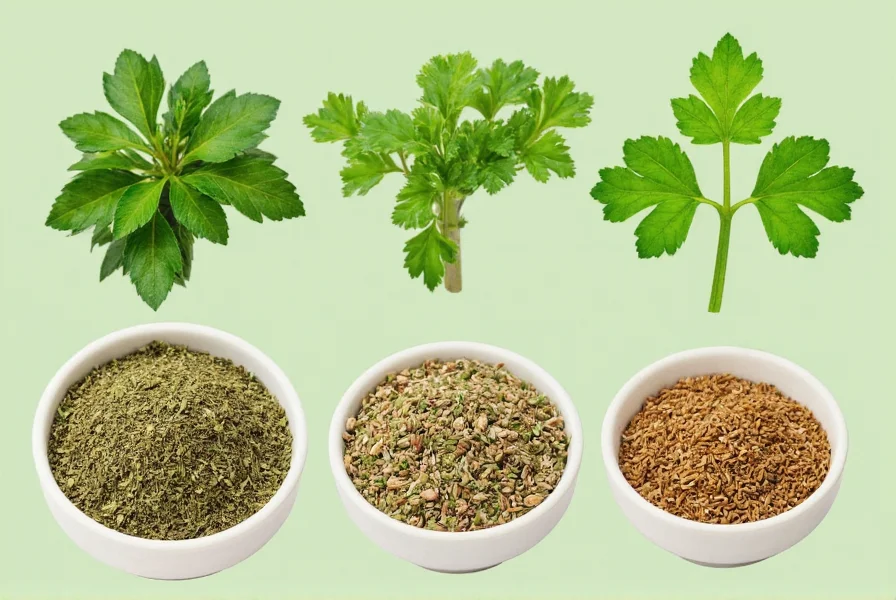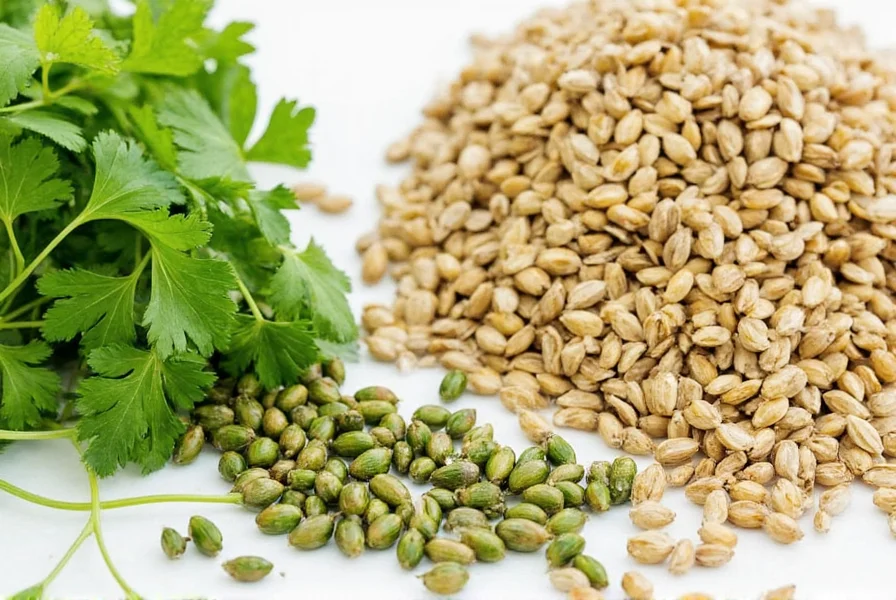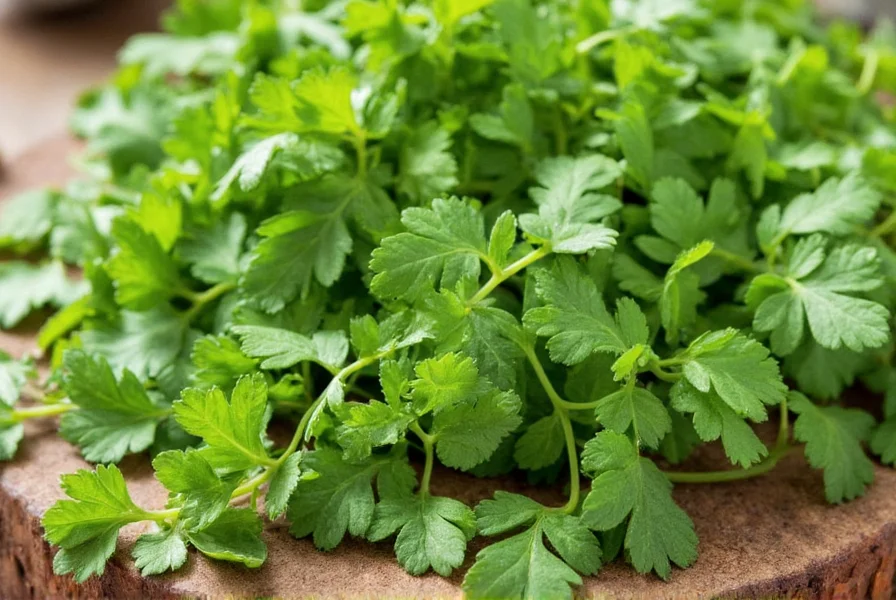The best substitute for fresh coriander (cilantro) is Italian parsley combined with a squeeze of lime juice, which mimics its citrusy freshness. For dried coriander seeds, use half the amount of cumin plus a pinch of lemon zest. No perfect replacement exists, but these alternatives work well depending on your specific recipe and cuisine.
When you're in the middle of cooking and realize you're out of coriander, knowing effective substitutes can save your dish. Coriander—known as cilantro in the United States when referring to the fresh herb—offers a distinctive citrusy, bright flavor that's challenging to replicate exactly. Understanding what makes coriander unique helps you select the most appropriate alternative for your culinary needs.
Understanding Coriander's Unique Flavor Profile
Coriander provides a complex flavor profile that combines citrus notes with earthy, slightly peppery undertones. The fresh leaves (cilantro) have a bright, lemony quality, while the dried seeds offer warm, nutty, and citrusy characteristics. This dual nature means substitutes must be chosen carefully based on whether you need fresh herb replacement or dried spice alternatives.
Best Substitutes for Fresh Coriander (Cilantro)
When your recipe calls for fresh coriander leaves, consider these practical alternatives:
| Substitute | Ratio | Best For | Flavor Notes |
|---|---|---|---|
| Italian parsley + lime juice | 1:1 parsley + 1/2 tsp lime per tbsp | Most dishes | Mimics freshness with citrus boost |
| Culantro (recao) | 1:1 (use less as stronger) | Caribbean/Latin dishes | Similar flavor but more intense |
| Thai basil | 3/4:1 | Asian cuisine | Anise notes complement similar dishes |
| Dill + mint | 1/2 dill + 1/2 mint | Fish, salads, dips | Herbaceous with complementary freshness |
For immediate cooking needs, the parsley-lime combination works remarkably well as a substitute for coriander in salsas, guacamole, and garnishes. The key is adding that citrus element which mimics coriander's distinctive flavor component. When substituting for coriander in Mexican dishes, consider adding a small amount of epazote to your parsley mixture for more authentic results.

Best Substitutes for Dried Coriander Seeds
Dried coriander seeds have a completely different flavor profile than the fresh leaves—they're warm, citrusy, and slightly nutty. When you need a substitute for ground or whole coriander seeds:
- Cumin plus lemon zest: Use half the amount of cumin plus a pinch of dried lemon zest. This combination works well as a coriander powder substitute in curry blends and spice rubs.
- Garam masala: In Indian recipes, use 3/4 the amount of garam masala when substituting for coriander seeds.
- Fennel seeds: For Middle Eastern or Mediterranean dishes, lightly crushed fennel seeds provide a similar citrus note.
- Caraway seeds: Use sparingly (1/3 amount) in European recipes where coriander appears in spice blends.
Cuisine-Specific Coriander Alternatives
Understanding regional cooking traditions helps select the most appropriate substitute for coriander:
Mexican and Latin American Cuisine
When substituting for coriander in salsa or guacamole, try a combination of parsley, a small amount of mint, and lime zest. Epazote works well in bean dishes where coriander might otherwise be used. For authentic flavor in Mexican cooking without coriander, consider using hoja santa which shares some similar aromatic properties.
Asian Cuisine
In Thai or Vietnamese dishes calling for fresh coriander, Thai basil makes an excellent substitute for coriander leaves. For Indian curries requiring coriander seeds, a mix of cumin and fennel seeds works better than single alternatives. When making pho without coriander, use culantro (which is actually different from coriander but has similar applications in Southeast Asian cooking).
Middle Eastern and Mediterranean Dishes
For tabbouleh or other grain salads that typically include fresh coriander, try a mix of parsley and dill. When substituting for coriander seeds in baharat or other spice blends, combine equal parts cumin, caraway, and a touch of allspice.
What NOT to Use as Coriander Substitutes
Certain common suggestions don't work well as coriander replacements:
- Dry cilantro: Dehydrated cilantro loses most of its distinctive flavor and develops unpleasant notes
- Coriander seed instead of fresh leaves: The flavor profiles are completely different—don't grind seeds as a fresh herb substitute
- Regular basil: Too sweet and lacks the citrus component essential to coriander's profile
- Excessive amounts of any substitute: Coriander has a delicate flavor that's easily overwhelmed
Maximizing Flavor When Using Coriander Substitutes
To get the best results when substituting for coriander:
- Add citrus elements like lime zest or lemon juice to mimic coriander's bright notes
- Combine multiple herbs rather than relying on a single substitute for coriander
- Add substitutes later in cooking to preserve their delicate flavors
- Start with less substitute than you think you need—you can always add more
- Consider the dish's other ingredients when selecting your coriander replacement

Preventing Future Coriander Shortages
Rather than constantly searching for coriander substitutes, consider these practical solutions:
- Freeze fresh coriander leaves in olive oil in ice cube trays
- Grow your own coriander in a small pot on your windowsill
- Toast and grind your own coriander seeds for maximum flavor
- Store dried coriander seeds in an airtight container away from light
Common Questions About Coriander Substitutes
Can I use dried cilantro as a substitute for fresh coriander?
No, dried cilantro is not a good substitute for fresh coriander. The drying process significantly alters the flavor profile, often creating unpleasant notes. Instead, use Italian parsley with a squeeze of lime juice for a much better alternative to fresh coriander.
What's the best substitute for coriander in guacamole?
For guacamole, the best substitute for coriander is a combination of Italian parsley and fresh lime juice. Use equal parts parsley to what the recipe calls for coriander, plus an extra teaspoon of lime juice per tablespoon of parsley. This mimics coriander's citrus notes while providing similar fresh herb texture.
Can cumin replace coriander seeds in curry recipes?
Cumin can partially replace coriander seeds in curry recipes, but use only half the amount of cumin plus a pinch of lemon zest. Coriander seeds have citrus notes that cumin lacks, so the addition of citrus helps create a more accurate substitute for coriander in spice blends.
Why does coriander taste like soap to some people?
Approximately 20% of people have a genetic variation that causes coriander to taste soapy. This is due to specific olfactory-receptor genes that interpret the aldehydes in coriander as soap-like. If you're one of these people, substitutes like parsley with lemon juice provide a better flavor experience than trying to use coriander itself.
Is there a difference between coriander and cilantro?
Yes, coriander and cilantro come from the same plant (Coriandrum sativum) but refer to different parts. In American English, "cilantro" refers to the fresh leaves and stems, while "coriander" refers to the dried seeds. In most other English-speaking countries, both are called coriander. This distinction is crucial when finding substitutes, as fresh and dried forms have completely different flavor profiles.











 浙公网安备
33010002000092号
浙公网安备
33010002000092号 浙B2-20120091-4
浙B2-20120091-4